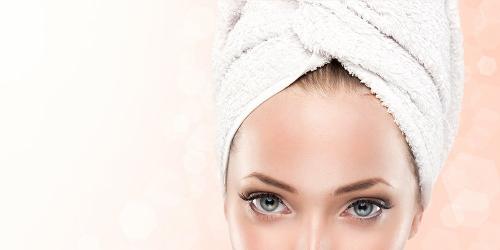AHA, Hyaluronic acid , polyphenols, etc. These ingredients are present in most of our creams and serums . Here is the list of the most effective molecules to preserve (or find) a beautiful skin .
Hyaluronic acid (or HA): an outstanding plumping
This molecule is naturally present throughout my body, in my eyes, my dermis, my joints. True double-sided sponge, it moisturizes and smooths my skin on the surface and plumps it deeply. Unfortunately, with age, my cells make less and less of it. My skin is wrinkling and losing its softness. Hence the interest of applying care rich in hyaluronic acid to do the job.
Cosmetics offer hyaluronic acids (all made by biotechnology) of different molecular weights. Those who have a high molecular weight, so larger molecules stay on the surface and smooth my skin quite effectively.
If I choose formulas of medium or low molecular weight their finer molecules, penetrate deeper and plump, retonify my features giving them a nice rebound. Most formulas incorporate an HA with all three sizes of molecules.
Glycerol or glycerin: a fast and lasting moisturizer
Obtained from vegetable oils , it is one of the best moisturizers. Not only does it have the ability to capture water molecules but it also activates certain enzymes in my skin and increases its ability to trap water. As it is able to diffuse in the upper layers of the skin and to stay in reserve it has an effectiveness not only immediate and fast but also very durable.
It is incorporated between 3 to 10% in skincare products . Higher concentration may make the formula a bit sticky. A plus: it is film-forming, so amazing for the care of the hands.
Fruit acids, or AHA: an instant burst
Ten or so years ago, retinol (or vitamin A acid) had its moment of glory. It is true that it shows a rare effectiveness against our signs of age: it accelerates cell renewal, boosts my elastic fibers, fights against my pigment spots . Only problem: my skin did not support it and peeling lamentably after two days.
Today retinol has been replaced by fruit acids with better tolerance. Salicylic, glycolic, lactic acid ... Formulators incorporate them into humectants or even lipids to respect sensitive skin . Be careful though: if I have hyper reactive skin I do not apply it to start that evening one day out of three for example to see my own tolerance.
Vitamin C: the best anti-aging
We all know the effect tone and energy of vitamin C taken orally, in fruits, vegetables. But it has even more virtues applied to our skin via a serum or a cream because it is then thirty times more available than orally. It is anti-stain , boosts our production of elastic fibers and collagen, accelerates healing , and protects our cells from oxidation.
The only flaw: it can not stand light, water or heat. It penetrates poorly into our skin and is degraded before reaching our cells. Formulators have found ways to get it to its place of action: either we mix the powder with an excipient when we use it, or the manufacturer grafted one or two molecules to stabilize it. His release is then in the skin, in the right place and is released for several hours.
A tip: if I feel tingling with the application I put my care at night by applying a softening cream above.
Polyphenols: the protectors of our cells
Polyphenols are molecules produced by plants to protect themselves from the sun, pollution , toxic environments. They belong to several families (flavonoids, resveratrols, antocyanes, curcumin etc ...) but all have the faculty to protect us too. They prevent the membrane of our cells from oxidizing , a phenomenon that causes them to malfunction or even die. Scientists have therefore incorporated into our care these polyphenols from many plants by mixing them often with one another for an even broader antioxidant action.
Centella Asiatica: a gifted healer
In Asia it is called the tiger grass because these felines, after fighting, were rolling in the leaves of Centella to heal their wounds. This plant is indeed rich in asiaticosides and madecassosides, two active ingredients that stimulate the production of collagen and elastin fibers , and thus accelerate healing. It is found in skincare for hypersensitive skins, for the skins damaged by the sun, which begin to wrinkle and lose their firmness.



